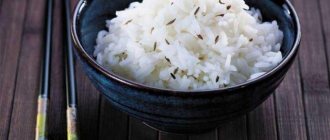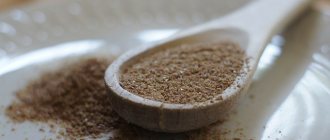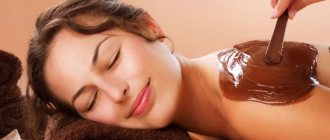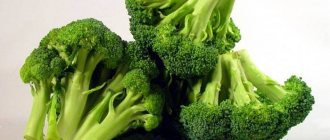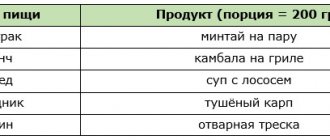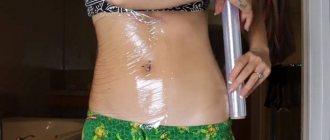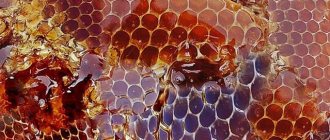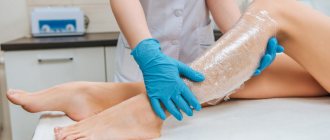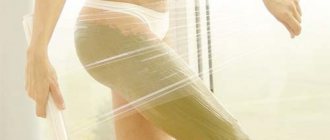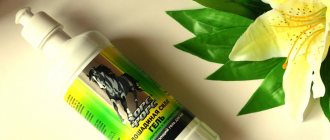Content
- What algae are used for the procedure?
- Indications for seaweed wrapping and the effect of the procedure
- Algae wrap: contraindications to the procedure
- Types of seaweed wraps
- How the procedure is carried out in the salon
- Seaweed wrap at home
- We buy ready-made masks
- We carry out the procedure at home
- Seaweed wrap recipes
- Frequency of procedures and course duration
- Points for and against
- Conclusion
What algae are used for the procedure?
In beauty salons and spa studios they perform body wraps:
- kelp - brown seaweed in leaf or crushed form;
- spirulina - blue-green algae, which is sold in powder form;
- fucus - brown seaweed, which is sold in crushed form.
Each of the presented underwater plants is a real storehouse of microelements, amino acids and vitamins. A high concentration of iodine accelerates metabolism in tissues, which triggers the active burning of excess fat.
Alginate wraps are especially popular today. Alginates are an extract from algae, which is known for its moisturizing, healing and lifting effects. A mask based on such organic components nourishes the skin, relieves swelling and activates microcirculation in tissues.
Indications for seaweed wrapping and the effect of the procedure
This type of thalassotherapy is designed to sculpt the figure, fight cellulite, and smooth out stretch marks on the body. Seaweed wraps are used both for the whole body and for individual problem areas.
Indications for the procedure:
- excess weight;
- swelling of the body;
- cellulite and sagging skin;
- stretch marks on the body.
What are the health benefits of seaweed wraps? The procedure has a beneficial effect on the nervous system, relieving stress. Cold wrap is also a prevention of varicose veins.
Thalassotherapy produces a detox effect, helping the body cleanse itself of accumulated toxins. Algae wrap for weight loss helps remove excess fluid, so after the procedure you feel pleasant lightness and a surge of strength.
After this spa ritual, the skin becomes elastic and smooth, and the body becomes more toned.
How do seaweed wraps work?
Penetrating deeply into the skin, salt and beneficial substances contained in algae have the following effects:
- accelerate the process of fat breakdown in the subcutaneous layer, reduce the area of cellulite areas;
- normalize general metabolic processes, resulting in weight loss;
- activate skin regeneration;
- like a sponge, they draw out excess fluid from tissues and relieve swelling;
- restore skin tightness;
- have a rejuvenating effect;
- reduce the number and depth of stretch marks;
- strengthen the walls of blood vessels, which is an excellent prevention of varicose veins.
Algae wrap: contraindications to the procedure
Thalassotherapy is prohibited in the following cases:
- pregnancy and breastfeeding;
- dermatological diseases;
- hyperfunction of the thyroid gland;
- cardiovascular, oncological and gynecological diseases;
- diabetes;
- thrombophlebitis;
- tendency to allergic reactions, in particular to iodine.
For severe varicose veins, the procedure is not recommended. As a last resort, hot wrapping should not be carried out.
Note! In these cases, the procedure should be postponed if:
- less than 2 days have passed since depilation;
- there are unhealed lesions on the skin (burns, abrasions, wounds);
- you have a cold, which is accompanied by elevated body temperature.
Types of seaweed wraps
The classification of the procedure is based not only on the cosmetics used. There are these types of wraps:
- Hot is the most effective in the fight against excess weight and cellulite. The seaweed for wrapping is heated to a temperature of 38-40 degrees.
- Cold is safe for those who are predisposed to varicose veins. The algae temperature does not exceed 20 degrees.
- Contrast is an effective method to get rid of the “orange peel”. First, hot applications are applied to problem areas, and then they are replaced with cooled ones.
Which type of wrap is more effective? At high temperatures, subcutaneous fat is burned faster, but the body receives more stress - the skin becomes irritated, and there is a risk of allergic reactions.
Contrast wraps help you lose weight and strengthen blood vessels at the same time. However, following the correct protocol for the procedure at home is not easy.
Mechanism of action of seaweed wrap
The algae procedure helps eliminate excess weight in a short time. This product is distinguished by the presence of a large number of vitamins, acids, minerals and antioxidants in its composition. Nutrients help burn fat, and cling film provides a thermal effect that improves the results of the session.
Thalassotherapy has the following effects on the body:
- improves blood circulation and lymph flow;
- fats are consumed faster, broken down and eliminated with excess fluid;
- metabolism in the problem part of the body accelerates;
- thanks to kelp, pores are cleansed and cellular respiration improves;
- the skin is enriched with nutrients, which include choline, ascorbic acid, calcium, iodine, potassium, minerals and vitamins;
- the skin suffering from cellulite is smoothed out, becomes elastic, smooth and even, after 3-4 sessions the orange peel completely disappears;
- The biochemical effect of algae is enhanced by the thermal effect, so weight loss occurs quickly.
You can add other components to the product that accelerate fat burning and allow you to achieve maximum results from the wrap. Kelp is a source of vitamin C and iodine, so you need to be careful, because an overdose can cause irritation, age spots, burns and redness. Sea kale has an intense effect on the body. It is used carefully for weight loss, taking into account contraindications.
How the procedure is carried out in the salon
The wrap is preceded by a light massage, which prepares the body for active lymphatic drainage. It is recommended to scrub the body first.
If algae in powder form is used for the procedure, they are diluted with water in advance to the consistency of thick sour cream and applied to the entire body with massage movements. Afterwards, the mask is fixed with plastic film.
To enhance the fat-burning effect, the master additionally covers the client with a thermal blanket. The mask exposure time is from 20 to 60 minutes. The higher its temperature, the sooner you need to wash the mixture off the skin.
If a kelp wrap is performed, then its leaves are soaked in advance and after 15 minutes are applied to the body. After application, cover with plastic film and remove after 40 minutes.
The master should not leave the office while the wrap is in effect. It is necessary to monitor the client’s reaction to the algae mask, to monitor whether his health has worsened.
Do I need to take a shower after wrapping? If a mask made from diluted powder is used for the procedure, simply rinse it off with water. If you were wrapping kelp seaweed, it is better to simply remove the leaves and wipe the skin. The principle of a fabric mask works here, when even after the procedure, the remains of the “sea cocktail” nourish the epidermis with useful substances.
At the final stage, soothing milk or anti-cellulite cream is applied to the skin. This not only consolidates the wrapping effect, but also partially neutralizes the specific smell of algae. For this reason, cosmetologists do not recommend planning a procedure before an important event or a visit.
Preparation
To make the treatment more effective, prepare your skin. First, steam it. The best way to do this is to take a hot bath. The pores of the epidermis will open, and all the beneficial substances from the algae will easily penetrate into it. Secondly, cleanse your skin using a body scrub or folk remedies, such as salt or coffee. Cleansing will remove dead skin particles and increase its permeability.
It is also important to prepare the area. This could be a bed or a sofa. To protect a piece of furniture from dirt, cover it with an old blanket.
Seaweed wrap at home
Thalassotherapy is prohibited during pregnancy, as well as acute infectious, gynecological and oncological diseases.
Have you decided to carry out this procedure yourself? This is actually not such a difficult task. We will share useful tips on how to organize a seaweed wrap at home with maximum efficiency.
We buy ready-made masks
Their advantage is ease of use. Simply apply the mask to problem areas, cover with film and wash off after 25-30 minutes.
Ready-made wraps are sold in stores of any class - from professional to popular chain stores. The beauty market offers products that are accessible to buyers with any budget.
In the mass market, ready-made wraps cost about 150 UAH. and higher. There are also cheaper products - for example, Spirulina from the Yaka brand, which costs about 90 UAH on the Internet. per jar.
Products for professional use cost 2-3 times more. One of the most affordable options is products from the French brand Alg Spa, which specializes in alginate masks. A jar of this wrap with chopped kelp and fucus costs about 275 UAH.
What to pay attention to : Choose products that consist mainly of natural ingredients. Increased concentration and perfume fragrances are a sign of low-quality cosmetics. Too low a price is also a bad sign, which is not inherent in a good product.
We carry out the procedure at home
For those who are afraid of making mistakes with cosmetics, there is a win-win option - prepare the wrap yourself. This way you will be confident that the procedure you perform at home is “environmentally friendly”.
How to make your own kelp wrap: recipe and step-by-step instructions
- Soak the seaweed for 20-30 minutes in cold or warm water. Ready-made kelp can be used no more than 2 times.
- Take a shower and lightly exfoliate your skin. You can use a salt scrub as an exfoliant.
- Wrap problem areas with seaweed and secure the application with film, and then lie down and cover yourself with a blanket.
- Exposure time is from 20 to 30 minutes for hot wraps and from 30 to 60 for cold ones.
- Remove algae, dry your body with a towel and apply anti-cellulite cream to your skin.
Important! An hour before and after the procedure, avoid any drinking.
Seaweed wrap recipes
We offer budget options for home treatments! The necessary ingredients are sold in pharmacies and grocery stores.
Wrap with dried seaweed and clay
You will need:
- dried crushed seaweed – 200 g;
- blue clay – 50 g;
- olive oil – 1 tsp;
- rose oil – 10 drops;
- peppermint oil – 20 drops.
Dilute the algae powder with warm water to a paste consistency. Add clay, previously diluted with water, a mixture of oils and mix thoroughly.
The mask is left on the skin for about 40 minutes.
Wrap with fucus, clay and horsetail
You will need:
- dried fucus – 4 tbsp;
- dried horsetail – 4 tbsp;
- white or blue clay - 3 tbsp.
Grind the fucus and horsetail in a blender and add hot water to dilute to a paste consistency. Leave for half an hour, then add clay (if desired, you can add 1-2 drops of your favorite essential oil).
Apply the mixture to problem areas, wrap them in film, wrap yourself warmly and wash off the mask after an hour.
Wrap with spirulina, honey and yogurt
You will need:
- spirulina powder – 3 tbsp;
- honey – 4 tbsp;
- natural yogurt without additives – 4 tbsp.
Mix all ingredients to obtain a homogeneous paste. Apply the mask to problem areas, wrap them with film and wrap yourself warmly. After half an hour, the mixture can be washed off.
In this video you will learn how to make seaweed wrap at home.
Wrap with kelp and coffee
You will need:
- kelp powder – 100 g;
- ground coffee – 100 g.
Mix the ingredients and dilute them with water to a paste consistency. Apply to problem areas, wrap with film and cover with a warm blanket. After 40 minutes, the mask is washed off.
Useful tips
Some tips:
- You can carry out combined wraps, combining algae, for example, with essential oils and clay.
- One algae mass can be used twice. But it can be stored for no more than 4-6 days.
- To enhance the wrapping effect, warm up towels, clothes or blankets with a hairdryer.
- Carry out the procedures every 1-2 days. In total, the course includes from 10 to 20 sessions. It is recommended to repeat the treatment once every 2-3 months.
- It is best to perform the wrap before bed and in a calm environment.
Have a nice and healthy seaweed wrap!
Points for and against
The high-quality effect of seaweed wraps has long been tested in practice. Their main advantage is their modeling and healing effect. After the first procedure, it is noticeable that the skin has become more elastic and toned.
Disadvantages of the procedure:
- in salons offering spa services, body wraps cost a lot of money;
- the procedure is difficult to carry out at home;
- After washing off the mixture, an unpleasant odor remains on the skin.
